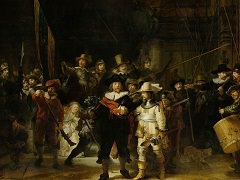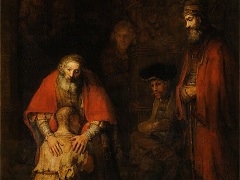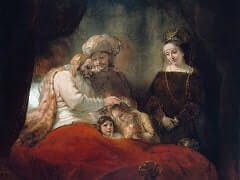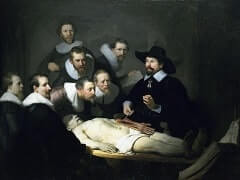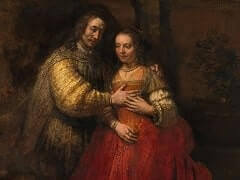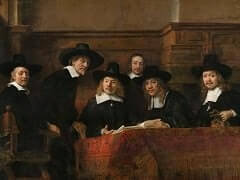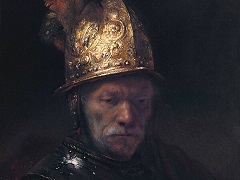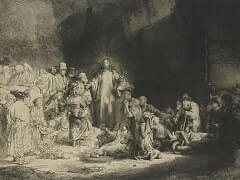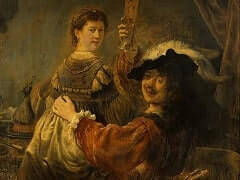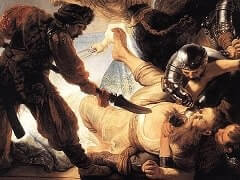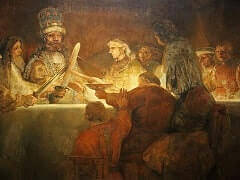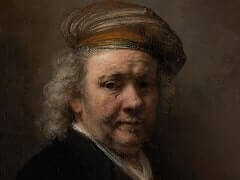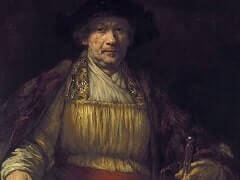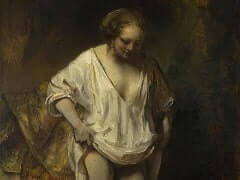The Holy Family, 1645 by Rembrandt
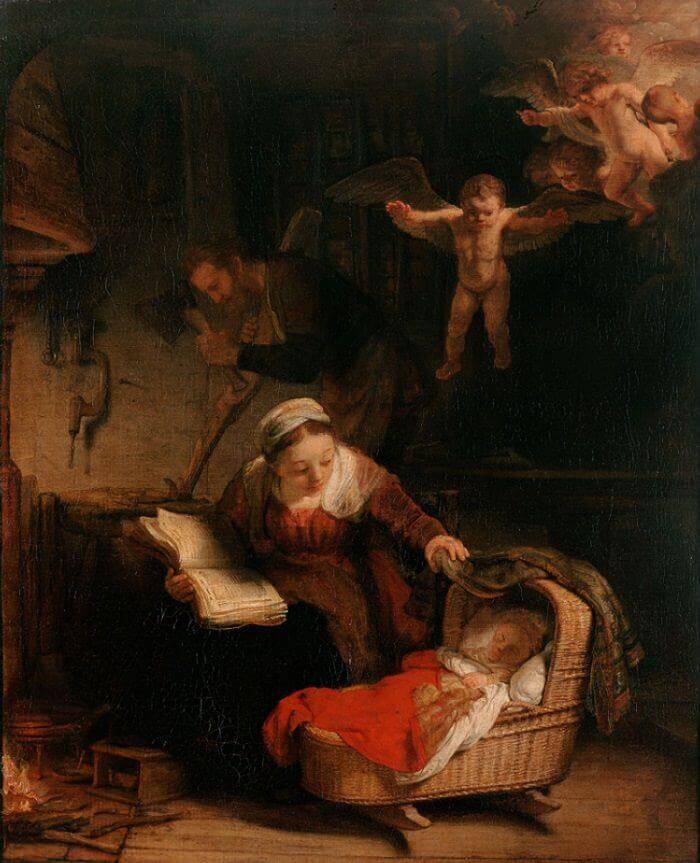
A domestic scene, like so many there might have been in the seventeenth century, in a simple interior, a room in which people both lived and worked. The daylight is excluded. By the fire sits a young woman with a book in her lap,
looking into the wicker cradle in which a baby lies sleeping peacefully under a red baize blanket. His father is standing further back in the room beside a work bench, holding an axe, and a brace and bit can be seen hanging on the wall.
But this is no ordinary domestic scene, because there are plump little cherubs who come floating down from somewhere up on the left: this is the Holy Family, the Christchild is in the cradle. Mary and Joseph do not appear to be aware of
what is happening behind them, or of the light descending from heaven with the cherubs, falling on the child and outshining the fire on the hearth.
The scene closely resembles the many drawings Rembrandt made over the years of his own domestic environment. To be able to paint a child so deeply asleep, he must have observed a child asleep often and closely. For the cherubs Rembrandt
probably used inanimate models, the plaster or wooden putti which dangled from many studio ceilings.
It can hardly be accidental that Joseph is busy making a yoke. In fifteenth-and sixteenth-century pictures of the Holy Family, Joseph is often depicted working on something that refers to the future of the child in the cradle: for instance
a mousetrap, a symbol of the sins which, thanks to Jesus, will no longer work their destruction. Is the yoke perhaps a reference to the heavy burdens Jesus will have to bear?
Since Saskia's death in 1642 much had changed in Rembrandt's personal circumstances. To care for Titus he had taken a widow into service, Geertje Dircx from Edam. There is documentary evidence that she soon became more than a children's
nurse: in 1648 she accused Rembrandt at law of breach of promise. A long and unsavoury quarrel ensued, in part fought out in court, and ending only with Geertje's death in 1656. But none of this was yet obvious in 1645. There were
certainly indications that all was not well with Rembrandt's finances. His income could not cover his expenses and his obligations, and in spite of the 1639 contract the house was not yet paid off. By virtue of her will, he could not draw
on Saskia's inheritance.


